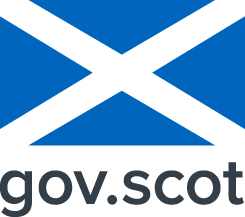Data Zone Boundaries 2001
Data zones are the core geography for dissemination of results from Scottish Neighbourhood Statistics (SNS). The data zone geography covers the whole of Scotland and nests within local authority boundaries. Data zones are groups of Census output areas which have populations of between 500 and 1,000 household residents, and some effort has been made to respect physical boundaries. In addition, they have compact shape and contain households with similar social characteristics. Data zones are a stable geography and can be used to analyse change over time.
There are 6,505 data zones across Scotland, and each have been assigned an individual code that follows the Scottish Government's standard naming and coding convention. The code prefix is S01, which has been assigned to designate data zones. In some cases, data zones have also been assigned a name. To date, Local Authorities that have named their data zones include Eilean Siar (Western Isles), Falkirk, Fife, Highland, Moray, Shetland, South Lanarkshire, Stirling and West Lothian.
Default
Identification info
- Metadata Language
- English
- Character set
- UTF8
- Dataset Reference Date (Creation)
- 2001-02-01
- Dataset Reference Date (Publication)
- 2001-02-01
- Identifier
- www.gov.scot / SG_DataZone_Bdry_2001
- Presentation form
- Digital map
- Maintenance and update frequency
- Not planned
-
GEMET - INSPIRE themes, version 1.0
-
-
Statistical units
-
-
GEMET - Concepts, version 2.4
-
-
statistical data
-
population distribution
-
-
IPSV Subjects List
-
-
Statistical analysis
-
- Limitations on Public Access
- Other restrictions
- Other constraints
- No limitations to public access
- Use constraints
- Other restrictions
- Other constraints
- Open Government Licence
- Other constraints
-
The following attribution statement must be used to acknowledge the source of the information: Copyright Scottish Government, contains Ordnance Survey data © Crown copyright and database right (insert year)
- Other constraints
-
Dataset is complete for Scotland. Care should be taken when using this dataset with lookups to other postcode based geographies. Some postcode unit boundaries have changed since data zones were created therefore exact match of the boundaries are unlikely.
- Spatial representation type
- Vector
- Denominator
- 10000
- Topic category
-
- Boundaries
- Society
- Code
- S92000003
))
Temporal reference
Temporal extent
Temporal extent
- Additional information
- Code
- EPSG:4258
- Code
- EPSG:27700
Distribution Information
Data format
- Data format
-
Name Version WMS
1.3.0
WFS
2.0.0
ESRI REST
1.0
ESRI Shapefile
1.0
Transfer options
- Resource Locator
-
Protocol Resource Locator Name OGC:WMS
https://maps.gov.scot/server/services/ScotGov/StatisticalUnits/MapServer/WMSServer? DataZoneBdry2001
OGC:WFS
https://maps.gov.scot/server/services/ScotGov/StatisticalUnits/MapServer/WFSServer? SU:DataZoneBdry2001
ESRI:REST https://maps.gov.scot/server/rest/services/ScotGov/StatisticalUnits/MapServer/1 Data Zone Boundaries 2001
WWW:DOWNLOAD-1.0-http--download
https://maps.gov.scot/ATOM/shapefiles/SG_DataZoneBdry_2001.zip Data Zone Boundaries 2001
Data quality info
- Quality Scope
- Dataset
- Statement
-
The Data Zone geography was developed for use within the Scottish Neighbourhood Statistics programme to allow statistics across a number of policy areas to be readily (and regularly) available for a consistent and stable geography. The dataset was originally created by St. Andrews University and the detailed methodology can be found at http://www.scotland.gov.uk/library5/society/sndata-00.asp
In summary, primary school catchments were approximated to Census Output Area boundaries, which were then amalgamated to data zones based upon population, compactness and social homogeneity. The main criteria used in the initial definition of data zones in approximate order of importance were:
1. Approximate equality of resident population (500-1,000 persons)
2. Compactness of shape
3. Approximate homogeneity of social composition
4. Existence, where possible, of some community of interest
5. Accordance with other boundaries of local significance
6. Accordance with prominent features in the physical environment
This dataset also includes an area field with the value given in hectares. This area is the 'standard' area which was calculated from Census Output Areas and then assigned to Data Zones through a look up table. This follows the Office for National Statistics (ONS) Standard Area Measurement methodology, as agreed in 2005. This was done to ensure that total areas remained consistent when comparing geographies. For more information on ONS Standard Area Measurement, please see http://www.ons.gov.uk/about-statistics/geography/products/geog-products-other/sam/index.html.
The dataset is managed by the Scottish Government's Geographic Information Science and Analysis Team (GI-SAT), on behalf of Statistical Policy teams of the Scottish Government.
Metadata
- File identifier
- b7727226-f857-421d-8e9d-9151b07df68e XML
- Metadata Language
- English
- Resource type
- Dataset
- Metadata Date
- 2021-01-18T16:23:30
- Metadata standard name
- UK GEMINI
- Metadata standard version
-
2.3
Point of contact
- Individual name
-
GI-SAT
- Organisation name
-
Scottish Government
- Position name
-
Geographic Information Science and Analysis Team
- Delivery point
-
Victoria Quay
- City
-
Edinburgh
- Postal code
-
EH6 6QQ
- Country
-
United Kingdom
- Electronic mail address
-
GI-SAT@gov.scot SAT@gov.sco GI-SAT@gov.scot
- Role
- Point of contact
 SpatialData.gov.scot
SpatialData.gov.scot
